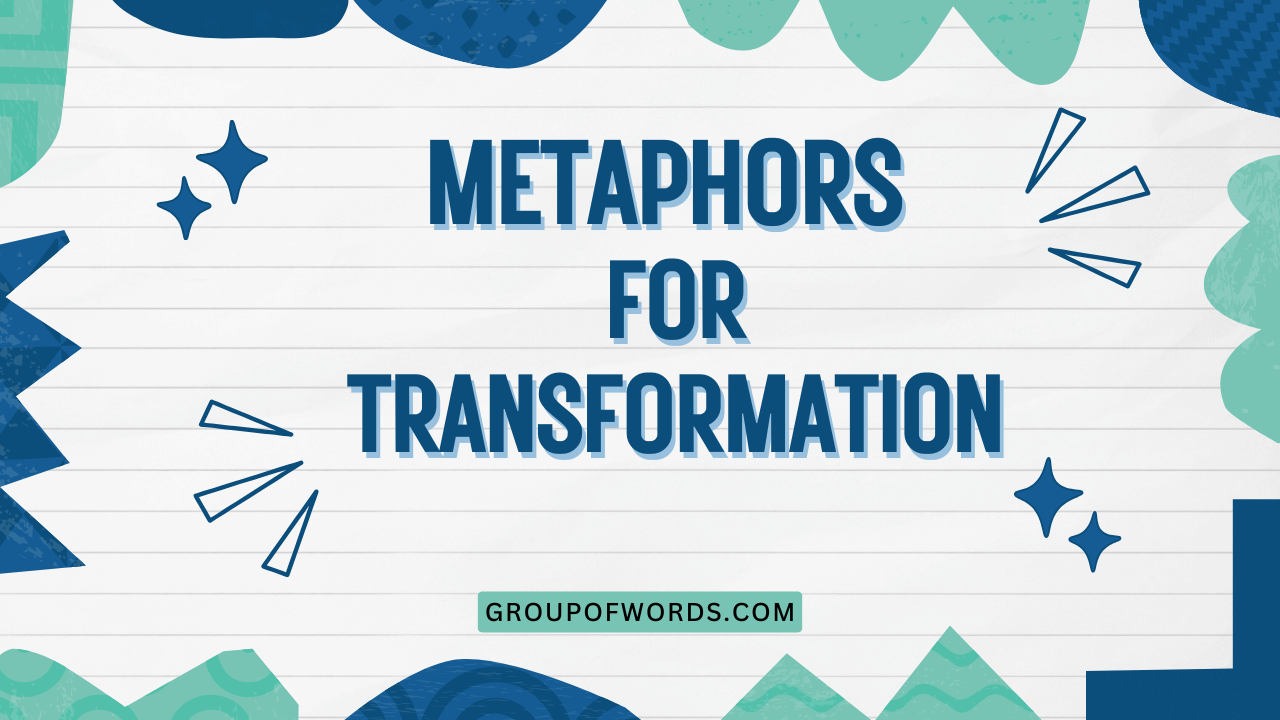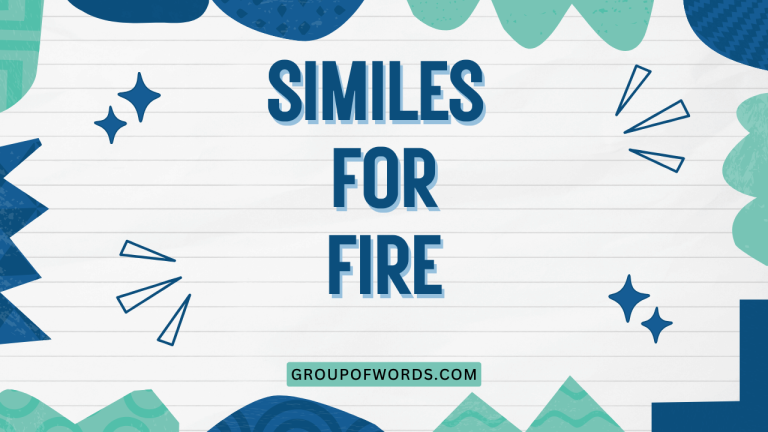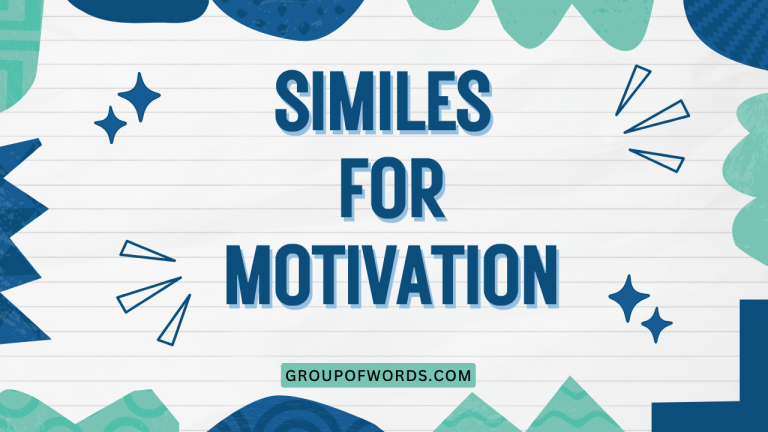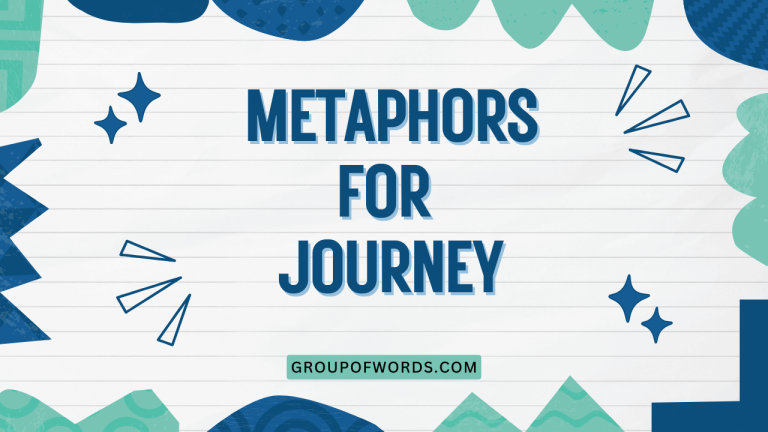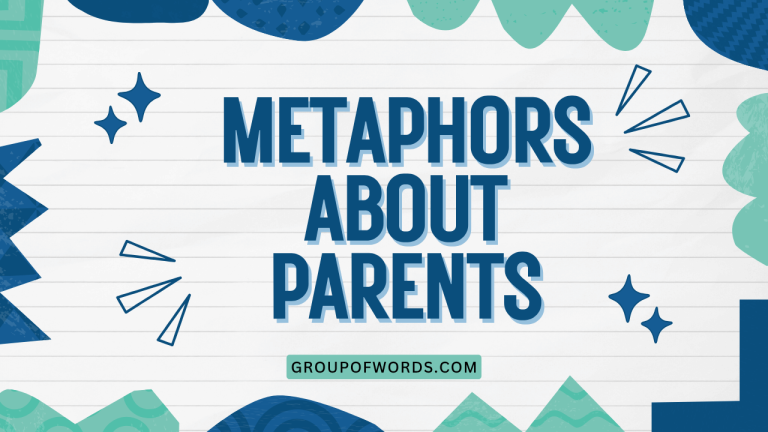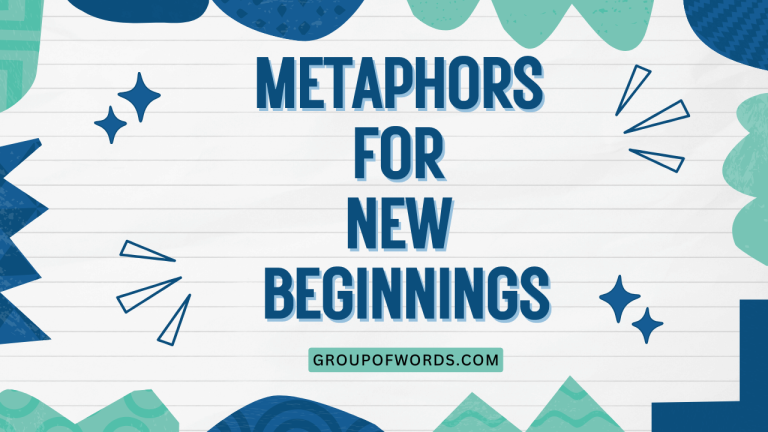Metaphors for Transformation: A Comprehensive Guide
Metaphors are powerful tools in language, allowing us to understand abstract concepts by relating them to concrete experiences. When discussing transformation, metaphors become particularly useful in conveying the often complex and nuanced processes of change.
Understanding these metaphors not only enriches our comprehension of the English language but also enhances our ability to communicate effectively about personal growth, societal shifts, and various other forms of transition. This article is designed for English language learners of all levels, from beginners looking to expand their vocabulary to advanced speakers aiming to refine their expressive abilities.
This guide will delve into the world of metaphors used to describe transformation, exploring their meanings, structures, and applications. By examining various categories of transformation metaphors and providing numerous examples, this article aims to equip you with the knowledge and skills necessary to recognize, interpret, and utilize these figures of speech with confidence.
Table of Contents
- Introduction
- Definition of Metaphors for Transformation
- Structural Breakdown
- Types and Categories of Transformation Metaphors
- Examples of Transformation Metaphors
- Usage Rules for Transformation Metaphors
- Common Mistakes with Transformation Metaphors
- Practice Exercises
- Advanced Topics
- Frequently Asked Questions
- Conclusion
Definition of Metaphors for Transformation
A metaphor is a figure of speech that directly compares two unrelated things, asserting that one thing is another, not literally, but figuratively. Metaphors for transformation specifically describe change, growth, or evolution by comparing it to something else that embodies those qualities. They help us understand abstract processes, such as personal development or societal change, by relating them to more concrete and familiar concepts. The function of these metaphors is to illuminate the nature of transformation, making it more relatable and understandable.
These metaphors can be found in various contexts, from literature and poetry to everyday conversations and business presentations. They are particularly prevalent in self-help books, motivational speeches, and narratives focusing on personal journeys.
Understanding these metaphors enhances our ability to interpret and appreciate the nuances of language and thought.
Structural Breakdown
The structure of a transformation metaphor typically involves two main components: the tenor and the vehicle. The tenor is the subject being described (the transformation itself), while the vehicle is the object or concept used to represent the tenor. The connection between the two is the shared quality or characteristic that makes the comparison meaningful.
For example, in the sentence “He emerged from the crisis a butterfly,” the tenor is the person’s transformation after the crisis, and the vehicle is a butterfly. The shared quality is the idea of significant change and beauty emerging from a less appealing state (the caterpillar/crisis).
The effectiveness of a metaphor lies in the strength and relevance of this connection.
A good metaphor should resonate with the audience, providing a clear and insightful comparison that enhances understanding. It should also be original and avoid clichés, which can weaken the impact of the message.
Types and Categories of Transformation Metaphors
Transformation metaphors can be categorized based on the type of vehicle used to represent the change. Here are some common categories:
Journey Metaphors
Journey metaphors depict transformation as a movement from one place to another, often involving challenges, obstacles, and milestones. These metaphors emphasize the process and the progress made during the transformation.
Growth Metaphors
Growth metaphors compare transformation to the development of plants or organisms, highlighting the gradual and organic nature of change. These metaphors often emphasize the nurturing and supportive conditions required for growth.
Construction Metaphors
Construction metaphors portray transformation as the building or creation of something new, emphasizing the effort, planning, and resources involved in the process. These metaphors often focus on the tangible results of the transformation.
Elemental Metaphors
Elemental metaphors use elements such as fire, water, air, and earth to represent transformation. These metaphors often emphasize the powerful and fundamental nature of change, as well as its potential for both destruction and renewal.
Animal Metaphors
Animal metaphors use the characteristics and behaviors of animals to symbolize transformation. These metaphors can highlight different aspects of change, such as adaptation, resilience, or the emergence of new qualities.
Examples of Transformation Metaphors
To further illustrate the different categories of transformation metaphors, here are some examples organized by type:
Journey Metaphor Examples
Journey metaphors effectively capture the sense of progress, challenges, and milestones inherent in transformation. The following table provides a range of examples:
| Metaphor | Explanation | Example Sentence |
|---|---|---|
| Climbing a mountain | Transformation is like a difficult ascent, requiring effort and perseverance. | Overcoming his fears was like climbing a mountain, but he finally reached the summit of his potential. |
| Navigating a storm | Transformation involves facing challenges and uncertainties, like steering a ship through rough waters. | Her recovery from the illness was like navigating a storm, but she emerged stronger on the other side. |
| Walking a path | Transformation is a journey with a clear direction, but also with potential detours and obstacles. | His career change was like walking a new path, filled with both excitement and uncertainty. |
| Crossing a bridge | Transformation is a transition from one state to another, like moving from one side of a bridge to the other. | Leaving her hometown was like crossing a bridge to a new chapter in her life. |
| Sailing a ship | Transformation is a journey guided by intention, but also influenced by external forces. | Starting his own business was like sailing a ship into uncharted waters, full of both promise and risk. |
| Running a marathon | Transformation requires endurance and commitment, like completing a long-distance race. | Writing her novel felt like running a marathon; it demanded patience and perseverance. |
| Embarking on a quest | Transformation is a search for something valuable, requiring courage and determination. | Her journey of self-discovery was like embarking on a quest for inner peace. |
| Following a road | Transformation is a journey with a predetermined route, but also with opportunities for exploration. | His path to success was like following a winding road, full of unexpected turns. |
| Taking a leap | Transformation requires a bold decision and a willingness to take risks. | Deciding to quit his job and travel the world was like taking a leap into the unknown. |
| Going on an expedition | Transformation is an exploration of new territories and possibilities. | Her research project was like going on an expedition to uncover hidden truths. |
| Hiking a trail | Transformation is a challenging but rewarding journey through varied terrain. | Recovering from the accident was like hiking a difficult trail, testing her strength and resilience. |
| Flying a kite | Transformation requires skill and patience, allowing one to soar to new heights. | Mentoring young students was like flying a kite, guiding them to reach their full potential. |
| Riding a bicycle | Transformation involves learning new skills and maintaining balance. | Adapting to the new company culture was like riding a bicycle, requiring constant adjustment. |
| Taking a train | Transformation is a journey with a set destination, involving different stages and stops. | Moving to a new country was like taking a train to a different world, full of new experiences. |
| Driving a car | Transformation is a journey controlled by the individual, allowing for changes in direction. | Managing the project was like driving a car, requiring constant attention and decision-making. |
| Rowing a boat | Transformation requires coordinated effort and teamwork. | Building the community garden was like rowing a boat, everyone working together to reach the shore. |
| Walking through a forest | Transformation involves navigating through complexities and finding one’s way. | Dealing with the legal issues was like walking through a dense forest, needing guidance to find the right path. |
| Climbing a ladder | Transformation is a step-by-step process towards a higher goal. | Her career progression was like climbing a ladder, each step bringing her closer to her dreams. |
| Exploring a cave | Transformation is a journey into the unknown, uncovering hidden aspects of oneself. | Therapy was like exploring a dark cave, revealing hidden emotions and traumas. |
| Sailing against the wind | Transformation involves overcoming resistance and pushing through challenges. | Fighting for equality was like sailing against the wind, requiring constant effort and determination. |
Growth Metaphor Examples
Growth metaphors emphasize the organic and gradual nature of transformation, often highlighting the importance of nurturing and supportive conditions. Here are some examples:
| Metaphor | Explanation | Example Sentence |
|---|---|---|
| Planting a seed | Transformation is like starting something small that has the potential to grow into something significant. | Her idea was like planting a seed, which eventually blossomed into a successful business. |
| Growing roots | Transformation involves becoming established and connected to a place or community. | Moving to the new city allowed him to grow roots and build a new life. |
| Blooming into a flower | Transformation is like developing into something beautiful and vibrant. | With encouragement, she bloomed into a flower, showcasing her unique talents. |
| Sprouting leaves | Transformation is the beginning of new growth and development. | His interest in art sprouted leaves after visiting the museum. |
| Bearing fruit | Transformation is the culmination of effort and hard work, resulting in tangible results. | Her years of dedication bore fruit when she finally won the award. |
| Nurturing a garden | Transformation requires care, attention, and the right conditions to flourish. | The teacher was nurturing a garden of young minds, helping each student grow. |
| Pruning a tree | Transformation involves removing unnecessary elements to promote healthy growth. | He was pruning a tree of bad habits to become a better person. |
| Germinating an idea | Transformation is the initial development of a new concept or plan. | The concept of sustainability was germinating an idea for a new eco-friendly product. |
| Cultivating a skill | Transformation is the process of developing and refining a particular ability. | She was cultivating a skill in coding by practicing every day. |
| Ripening into maturity | Transformation is the process of reaching full potential and development. | He was ripening into maturity, gaining wisdom and experience with age. |
| Watering a plant | Transformation requires consistent nourishment and support. | The mentor was watering a plant of potential by providing guidance and encouragement. |
| Tending to a field | Transformation involves careful management and attention to detail. | He was tending to a field of opportunities, carefully planning each step. |
| Weeding out negativity | Transformation requires removing harmful influences and attitudes. | She was weeding out negativity from her life to create a more positive environment. |
| Rooting out problems | Transformation involves identifying and addressing the underlying causes of issues. | They were rooting out problems in the system to improve efficiency. |
| Harvesting the rewards | Transformation is the process of reaping the benefits of hard work and dedication. | After years of effort, they were harvesting the rewards of their investment. |
| Growing stronger roots | Transformation involves becoming more resilient and grounded. | With each challenge, he was growing stronger roots, becoming more resilient. |
| Branching out | Transformation involves expanding horizons and exploring new possibilities. | She was branching out into different areas of expertise to enhance her career. |
| Budding with potential | Transformation is the early stage of promising development. | The young artist was budding with potential, showing great talent and promise. |
| Spreading seeds of change | Transformation involves influencing others and creating a ripple effect. | He was spreading seeds of change by advocating for social justice. |
| Reaching for the sun | Transformation involves striving for higher goals and aspirations. | The dancers were reaching for the sun, striving for perfection in their performance. |
Construction Metaphor Examples
Construction metaphors emphasize the effort, planning, and resources involved in building something new. These metaphors often focus on the tangible results of the transformation.
| Metaphor | Explanation | Example Sentence |
|---|---|---|
| Building a foundation | Transformation is like creating a solid base for future growth and development. | He was building a foundation of knowledge by studying diligently. |
| Constructing a new identity | Transformation is like creating a new sense of self through conscious effort. | After the divorce, she began constructing a new identity, focusing on her passions and goals. |
| Laying the groundwork | Transformation is like preparing the necessary conditions for future success. | They were laying the groundwork for a successful project by conducting thorough research. |
| Assembling the pieces | Transformation is like putting together different elements to create a cohesive whole. | She was assembling the pieces of her life after a period of chaos and uncertainty. |
| Crafting a masterpiece | Transformation is like creating something beautiful and enduring through skill and artistry. | The chef was crafting a masterpiece, using fresh ingredients and culinary expertise. |
| Sculpting a new self | Transformation is like shaping and refining oneself through introspection and discipline. | He was sculpting a new self through meditation and mindfulness practices. |
| Designing a future | Transformation is like creating a plan for the desired outcome. | They were designing a future filled with success and happiness. |
| Forging a path | Transformation is like creating a new route through uncharted territory. | She was forging a path in a male-dominated industry, breaking barriers and setting new standards. |
| Molding a new reality | Transformation is like shaping and influencing the surrounding environment. | They were molding a new reality through innovation and creativity. |
| Building bridges | Transformation involves creating connections and fostering understanding between different groups. | The diplomat was building bridges between nations through peaceful negotiations. |
| Renovating the mind | Transformation is like updating and improving one’s thoughts and beliefs. | He was renovating his mind by challenging his assumptions and embracing new perspectives. |
| Constructing a framework | Transformation is like creating a structured system to support growth. | They were constructing a framework for sustainable development. |
| Laying bricks of success | Transformation is like gradually building towards achievement through consistent effort. | She was laying bricks of success by working hard and staying focused on her goals. |
| Creating a blueprint | Transformation is like designing a detailed plan for a desired outcome. | They were creating a blueprint for a better society. |
| Shaping the future | Transformation involves influencing and determining the course of events. | The leaders were shaping the future through their decisions and actions. |
| Erecting a monument | Transformation is like creating a lasting symbol of achievement and legacy. | They were erecting a monument to honor the heroes of the past. |
| Carving a niche | Transformation is like creating a unique position or role for oneself. | He was carving a niche in the market with his innovative products. |
| Forming a new habit | Transformation is like establishing a new pattern of behavior through repetition. | She was forming a new habit of exercising every morning. |
| Fashioning a vision | Transformation is like creating a clear and compelling idea of the desired outcome. | They were fashioning a vision for a more sustainable world. |
| Refining a process | Transformation is like improving and optimizing a system or method. | They were refining a process to increase efficiency and reduce waste. |
Elemental Metaphor Examples
Elemental metaphors use fire, water, air, and earth to represent transformation, emphasizing the powerful and fundamental nature of change.
| Metaphor | Explanation | Example Sentence |
|---|---|---|
| Rising from the ashes | Transformation is like rebirth or renewal after a period of destruction. | After the company’s collapse, it rose from the ashes, stronger than before. |
| A cleansing fire | Transformation is like a process that purifies and eliminates impurities. | The crisis served as a cleansing fire, forcing them to address their underlying issues. |
| A tidal wave of change | Transformation is like a sudden and overwhelming force. | The new technology brought a tidal wave of change to the industry. |
| Flowing like a river | Transformation is like a continuous and natural process. | Her creativity was flowing like a river, unstoppable and vibrant. |
| A breath of fresh air | Transformation is like a new perspective or opportunity that revitalizes. | His innovative ideas were a breath of fresh air in the stale corporate environment. |
| Grounded like earth | Transformation involves becoming stable and secure in one’s identity. | After years of uncertainty, he finally felt grounded like earth. |
| A storm of emotions | Transformation involves intense and turbulent feelings. | She went through a storm of emotions after the breakup. |
| Melting away the ice | Transformation involves overcoming emotional barriers and resistance. | His kindness was melting away the ice around her heart. |
| Soaring through the sky | Transformation involves reaching new heights and achieving freedom. | Her career was soaring through the sky after the promotion. |
| Planted firmly in the ground | Transformation involves establishing a solid foundation and unwavering resolve. | Their principles were planted firmly in the ground, guiding their actions. |
| Burning with passion | Transformation is fueled by intense enthusiasm and dedication. | He was burning with passion for his work. |
| Drowning in sorrow | Transformation involves being overwhelmed by negative emotions. | She was drowning in sorrow after the loss. |
| Floating on air | Transformation involves feeling elated and carefree. | They were floating on air after receiving the good news. |
| Rooted in tradition | Transformation involves maintaining a connection to cultural heritage. | Their values were rooted in tradition. |
| A fiery determination | Transformation is driven by unwavering resolve and perseverance. | She had a fiery determination to succeed. |
| A sea of possibilities | Transformation opens up endless opportunities and potential. | The new job presented a sea of possibilities. |
| An airy lightness | Transformation brings a sense of freedom and ease. | She felt an airy lightness after forgiving herself. |
| A solid foundation of trust | Transformation builds a strong and reliable relationship. | They had a solid foundation of trust. |
| Forged in fire | Transformation is strengthened by adversity. | Their friendship was forged in fire. |
| Swept away by emotions | Transformation involves being overwhelmed by feelings. | He was swept away by emotions. |
Animal Metaphor Examples
Animal metaphors use the characteristics and behaviors of animals to symbolize transformation, highlighting different aspects of change.
| Metaphor | Explanation | Example Sentence |
|---|---|---|
| Emerging from a cocoon | Transformation is like a butterfly emerging from its pupa, representing a complete and beautiful change. | After years of self-doubt, she emerged from a cocoon, confident and radiant. |
| Shedding old skin | Transformation is like a snake shedding its skin, representing the release of old habits or beliefs. | He was shedding old skin, letting go of his past resentments. |
| Growing wings | Transformation is like developing the ability to soar and achieve new heights. | With her newfound confidence, she felt like she was growing wings. |
| Turning into a swan | Transformation is like the ugly duckling becoming a beautiful swan, representing the realization of one’s potential. | He turned into a swan, surprising everyone with his talent and grace. |
| Roaring like a lion | Transformation involves asserting oneself with strength and confidence. | She was roaring like a lion, defending her beliefs and values. |
| Adapting like a chameleon | Transformation involves adjusting to new environments and situations. | He was adapting like a chameleon to the changing demands of his job. |
| Building a nest | Transformation involves creating a safe and nurturing environment for oneself and others. | They were building a nest, creating a loving home for their family. |
| Flying in formation | Transformation involves working together towards a common goal. | The team was flying in formation, supporting each other and achieving great success. |
| Hibernating through winter | Transformation involves retreating and recharging during a difficult period. | She was hibernating through winter, taking time to reflect and recover. |
| Hunting for opportunities | Transformation involves actively seeking out new possibilities and challenges. | He was hunting for opportunities to advance his career. |
| Swimming against the current | Transformation involves resisting societal norms and expectations. | She was swimming against the current, challenging traditional roles. |
| Crawling before walking | Transformation involves taking small steps before achieving significant progress. | They were crawling before walking, building a solid foundation for their business. |
| Shedding feathers | Transformation involves letting go of old habits and appearances. | He was shedding feathers, adopting a more authentic style. |
| Changing stripes | Transformation involves altering fundamental characteristics and beliefs. | She was changing stripes, adopting a new perspective on life. |
| Leading the pack | Transformation involves taking initiative and guiding others towards success. | He was leading the pack, inspiring his team to achieve great things. |
| Following the herd | Transformation involves conforming to societal norms and expectations. | They were following the herd, adhering to traditional values. |
| Spreading one’s wings | Transformation involves embracing new opportunities and freedom. | She was spreading her wings, exploring new possibilities and adventures. |
| Building a web | Transformation involves creating a network of connections and relationships. | He was building a web of contacts to expand his business. |
| Molting into a new form | Transformation involves undergoing a significant physical or emotional change. | The caterpillar was molting into a new form to become a butterfly. |
| Camouflaging to fit in | Transformation involves adapting to blend into new environments. | He was camouflaging to fit in with the new team. |
Usage Rules for Transformation Metaphors
Using transformation metaphors effectively requires considering several factors. First, ensure the metaphor is relevant and appropriate to the context.
The comparison should be clear and easily understood by the audience. Overly complex or obscure metaphors can confuse rather than clarify.
Second, avoid mixing metaphors from different categories, as this can create a jarring and nonsensical effect. For example, combining a journey metaphor with a construction metaphor in a single sentence can be confusing.
Third, be mindful of clichés. Overused metaphors can lose their impact and make your writing sound unoriginal.
Try to find fresh and creative ways to express transformation. Finally, consider the emotional tone of the metaphor.
Some metaphors can be empowering and inspiring, while others can be negative or discouraging. Choose metaphors that align with the desired message and emotional effect.
Common Mistakes with Transformation Metaphors
One common mistake is using mixed metaphors, where the tenor is compared to two or more unrelated vehicles, creating a confusing image. For example: “He was climbing a mountain while planting seeds of opportunity.” This mixes the journey metaphor of climbing a mountain with the growth metaphor of planting seeds, resulting in a nonsensical image.
Another mistake is using clichéd metaphors that have lost their impact through overuse. Examples include “turning over a new leaf” or “breaking down walls.” While these metaphors are understandable, they lack originality and can make your writing sound uninspired. Strive to find fresh and creative ways to express transformation.
Also, make sure the vehicle of your metaphor aligns well with the transformation you are describing. A poorly chosen metaphor can be confusing or even offensive if it doesn’t accurately or respectfully represent the change occurring.
Correct vs. Incorrect Examples:
| Incorrect | Correct | Explanation |
|---|---|---|
| He navigated a storm of opportunity. | He navigated a storm to find opportunity. | The mixed metaphor of navigating a storm *of* opportunity is unclear. The corrected sentence uses “storm” to represent a challenge *before* finding opportunity. |
| She turned over a new leaf and built a foundation. | She turned over a new leaf, starting fresh. OR She built a foundation for her future. | Mixing the cliché “turned over a new leaf” with “built a foundation” creates a mixed metaphor. The corrected sentences keep the metaphors separate and distinct. |
| The project blossomed into a marathon. | The project blossomed into a success. OR The project was a marathon of effort. | Mixing “blossomed” (growth) with “marathon” (journey) is confusing. The corrected sentences use metaphors from a single category. |
Practice Exercises
Test your understanding of transformation metaphors with these exercises. For each question, identify the type of metaphor used and explain its meaning in the context of the sentence.
| Question | Answer |
|---|---|
| 1. After the crisis, the company rose from the ashes. | Elemental Metaphor. The company experienced a major setback (destruction) but recovered and became stronger (rebirth). |
| 2. Her career was like climbing a ladder, each rung representing a new achievement. | Journey Metaphor. Her career progression involved overcoming challenges and reaching higher levels of success. |
| 3. He was sculpting a new self through daily meditation and mindfulness. | Construction Metaphor. He was actively shaping and refining his character and habits. |
| 4. The idea was planted as a seed and blossomed into a successful business. | Growth Metaphor. A small beginning grew into something substantial and flourishing. |
| 5. She shed her old skin, embracing her new identity with confidence. | Animal Metaphor. She released old habits and beliefs, embracing a new version of herself. |
| 6. The project was a tidal wave of change, sweeping away the old ways of doing things. | Elemental Metaphor. The project brought about a sudden and overwhelming transformation. |
| 7. Building a strong foundation of trust was crucial for the success of the partnership. | Construction Metaphor. Establishing a solid and reliable base was essential for the relationship. |
| 8. He was navigating a storm of emotions after the loss of his loved one. | Journey Metaphor. He was experiencing intense and turbulent feelings. |
| 9. With determination, she grew wings and soared to new heights in her career. | Animal Metaphor. She developed new abilities and achieved great success. |
| 10. The therapist helped him prune the negative thoughts that were holding him back. | Growth Metaphor. The therapist helped him remove harmful influences to promote healthy growth. |
| 11. She was burning with passion for her new project, working tirelessly to bring it to life. | Elemental Metaphor. Her intense enthusiasm and dedication fueled her efforts. |
| 12. They were forging a path towards a more sustainable future, despite the obstacles. | Construction Metaphor. They were creating a new route towards a desired outcome. |
| 13. After years of hard work, he finally harvested the rewards of his dedication. | Growth Metaphor. He reaped the benefits of his efforts. |
| 14. He was shedding his old skin, embracing his new identity with confidence. | Animal Metaphor. He released old habits and beliefs, embracing a new version of himself. |
| 15. She was floating on air after receiving the acceptance letter from her | Elemental Metaphor. She was feeling elated and carefree. |
Advanced Topics
For those looking to deepen their understanding of transformation metaphors, here are some advanced topics to explore:
Extended Metaphors
An extended metaphor is a metaphor that is developed over several lines or even throughout an entire work. It allows for a more detailed and nuanced comparison, creating a richer and more complex understanding of the subject.
In the context of transformation, an extended metaphor can illustrate the various stages and aspects of change in a comprehensive way.
Example:
“Life is a garden. We plant seeds of hope, nurture them with hard work, and prune away the weeds of negativity.
Sometimes, storms of adversity threaten to destroy our garden, but with resilience, we can rebuild and cultivate a beautiful landscape of growth and fulfillment.”
In this extended metaphor, the transformation of life is compared to the process of tending a garden, with each element representing a different aspect of personal growth and development.
Mixed Metaphors
As previously discussed, a mixed metaphor combines two or more unrelated metaphors in a way that creates a confusing or nonsensical image. While mixed metaphors are generally considered a mistake, they can sometimes be used intentionally for humorous or satirical effect.
However, it’s important to use them deliberately and with careful consideration of the intended impact.
Example:
“He was climbing the ladder of success while swimming against the tide of innovation.”
This mixed metaphor combines the journey metaphor of climbing a ladder with the elemental metaphor of swimming against the tide, creating a confusing and somewhat absurd image. While it might be used for comedic effect, it’s generally best to avoid mixed metaphors in serious writing.
Frequently Asked Questions
What is the difference between a metaphor and a simile?
A metaphor directly compares two things by stating that one thing is another, while a simile uses “like” or “as” to make a comparison. For example, “He is a lion” (metaphor) vs. “He is brave as a lion” (simile).
How can I avoid using clichéd metaphors?
To avoid clichés, try to think of original and creative comparisons that are specific to the context you are writing about. Brainstorm different images and ideas that relate to the transformation you are describing, and choose the most unique and evocative one.
Can metaphors be used in all types of writing?
Yes, metaphors can be used in various types of writing, from creative writing and poetry to academic and business writing. However, it’s important to use them appropriately and ensure they enhance rather than detract from the clarity and effectiveness of your message.
How do I choose the right metaphor for my writing?
Consider the audience, context, and purpose of your writing. Choose a metaphor that is relevant, understandable, and resonates with your intended message.
Test your metaphors on others to ensure they are clear and effective.
What if my metaphor is misunderstood?
If your metaphor is misunderstood, it may be too obscure or complex. Try rephrasing it or choosing a simpler and more direct comparison.
Provide additional context or explanation if necessary.
Conclusion
Metaphors for transformation are invaluable tools for expressing complex ideas and emotions related to change and growth. By understanding the different types of transformation metaphors, their structures, and usage rules, you can enhance your communication skills and deepen your appreciation of the English language.
Whether you are describing personal development, societal shifts, or any other form of transition, metaphors can help you convey your message with clarity, creativity, and impact. Embrace the power of metaphors to illuminate the path of transformation and inspire others to embark on their own journeys of growth and change.
